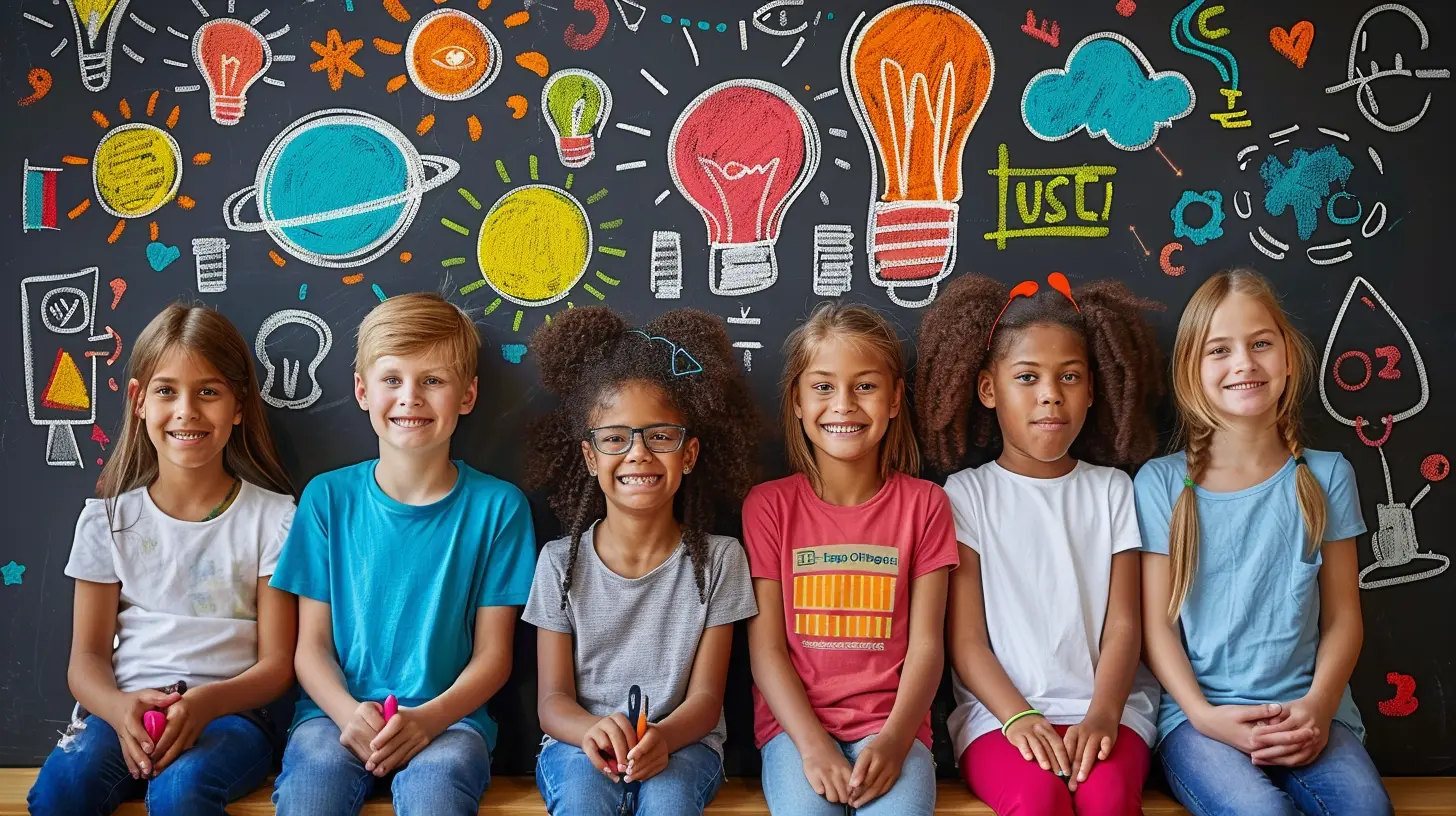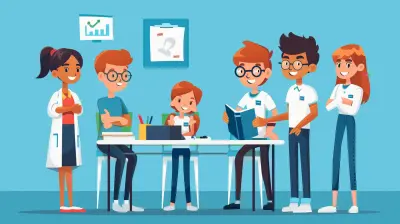Collaborative Learning and the Development of Communication Skills
12 October 2025
Imagine sitting in a classroom where students aren’t just quietly listening to a lecture but actively discussing, debating, and building ideas together. That’s collaborative learning in action! It’s not just about working in groups—it’s about shaping communication skills that are crucial for real-world success.
In today’s world, where teamwork is essential in almost every profession, the ability to communicate effectively is more than just a nice-to-have skill. It’s a must. So, how does collaborative learning help develop communication skills? Let’s break it down! 
What is Collaborative Learning?
Collaborative learning is an educational approach where students work together to accomplish a common goal, solve problems, or create something meaningful. Rather than simply absorbing information from lectures, students engage, discuss, and challenge each other’s ideas.It’s more than just sitting in a group—it’s about active participation, meaningful conversations, and shared responsibility. When done right, collaborative learning transforms a classroom into a mini think tank, where students not only understand concepts better but also hone essential life skills, like communication, critical thinking, and teamwork. 
Why Communication Skills Matter
Ever tried explaining something complicated to a friend and realized halfway through that you’re not making sense? Yeah, we’ve all been there. Communication skills aren’t just about talking—they’re about being understood.Good communication skills help you:
- Express ideas clearly – No more awkward explanations.
- Listen actively – Because real communication goes both ways.
- Resolve conflicts – Misunderstandings happen; knowing how to handle them is key.
- Work well with others – Whether in school, work, or life, collaboration is everywhere.
And guess what? Collaborative learning is one of the best ways to develop these skills! 
How Collaborative Learning Builds Communication Skills
So, what exactly happens in a collaborative learning environment that makes students better communicators? Let’s dive in.1. Encourages Active Listening
Ever been in a group where everyone talks over each other? Annoying, right? Collaborative learning teaches students that listening is just as important as speaking.When students engage in discussions, they must pay attention to what others are saying. Active listening is key to understanding different perspectives, responding appropriately, and contributing meaningfully to conversations.
2. Promotes Clear and Confident Speaking
Speaking in front of others can be nerve-wracking, but the more you do it, the easier it gets. In a collaborative learning setting, students get plenty of practice explaining ideas, asking questions, and defending their viewpoints.Over time, this builds clarity, confidence, and the ability to articulate thoughts effectively—skills that are crucial in both academic settings and the professional world.
3. Fosters Constructive Feedback
Not all feedback feels good, but learning how to give and receive feedback is a major component of effective communication. Collaborative learning environments encourage students to critique ideas, not people, which helps them develop constructive feedback skills.Instead of saying, “That idea doesn’t make sense,” students learn to say, “That’s interesting, but what if we looked at it this way?” This positive communication approach is invaluable in every aspect of life.
4. Encourages Problem-Solving Discussions
When students work together on a task, they debate, analyze, and brainstorm solutions. This back-and-forth exchange strengthens their ability to communicate ideas logically, consider different viewpoints, and find common ground—all essential for effective problem-solving.5. Enhances Social Interaction Skills
Not everyone communicates the same way. Some people are natural talkers, while others prefer to listen more. Collaborative learning forces students to interact with different personalities, helping them adapt their communication style based on the group dynamic.This skill is a game-changer in diverse workplaces where clear, adaptable communication can make or break team success.
6. Builds Confidence in Expressing Opinions
One of the biggest hurdles in communication is the fear of speaking up. Collaborative learning creates a safe space where students can voice their thoughts without fear of judgment.The more students participate in discussions, the more comfortable they become in sharing opinions—a confidence boost that carries over into presentations, debates, and even job interviews. 
Real-World Benefits of Communication Skills from Collaborative Learning
The impact of strong communication skills goes far beyond the classroom. Let’s look at some real-world scenarios where these skills matter the most.✅ Workplace Success
Every job requires some level of communication. Whether you’re pitching an idea, leading a team, writing emails, or collaborating on projects, strong communication skills make you stand out.✅ Stronger Relationships
Good communication isn’t just professional—it’s personal too. Being able to listen, empathize, and express thoughts clearly helps build and maintain healthy relationships.✅ Conflict Resolution
Misunderstandings happen, but knowing how to handle disagreements can prevent small issues from turning into big problems. Communication helps resolve conflicts peacefully and productively.✅ Leadership Development
Great leaders aren’t just the loudest voices in the room—they’re the ones who listen, communicate, and inspire. Collaborative learning fosters these leadership qualities early on.How to Implement Collaborative Learning for Better Communication
So, how can teachers and students make the most out of collaborative learning? Here are some practical tips:✅ Create Small, Diverse Groups
Mixing students with different strengths, backgrounds, and perspectives encourages meaningful discussions and improved communication.✅ Assign Clear Roles
Defining roles like leader, researcher, note-taker, or presenter keeps discussions focused and ensures everyone contributes.✅ Encourage Open Discussions
Let students agree, disagree, and debate respectfully. The key is to ensure discussions remain constructive and focused on ideas rather than personal opinions.✅ Use Real-World Scenarios
Engage students in case studies, role-playing, or group projects that mimic real-life communication challenges.✅ Practice Effective Feedback
Teach students how to give and receive constructive criticism to improve ideas and communication skills.Final Thoughts
Collaborative learning does more than just help students work together—it sharpens communication skills that are invaluable for success in the classroom, workplace, and beyond.By engaging in discussions, actively listening, giving feedback, and working towards common goals, students become stronger communicators, better problem solvers, and more confident individuals.
So next time you find yourself in a group project, don’t just focus on getting the work done—pay attention to how you communicate. You might be surprised by how much you grow!
all images in this post were generated using AI tools
Category:
Collaborative LearningAuthor:

Bethany Hudson
Discussion
rate this article
1 comments
Lucy McVaney
Collaborative learning: where talking in circles turns into a masterclass of communication! Let’s face it—if you can’t articulate your genius to your peers, are you even a genius? Time to ditch the solo act and embrace the chaos of group work. After all, teamwork makes the dream work, darling!
October 22, 2025 at 12:01 PM

Bethany Hudson
Absolutely! Collaborative learning not only enhances communication skills but also fosters creativity and innovation through diverse perspectives. Embracing group dynamics can truly elevate our understanding and articulation of ideas.


